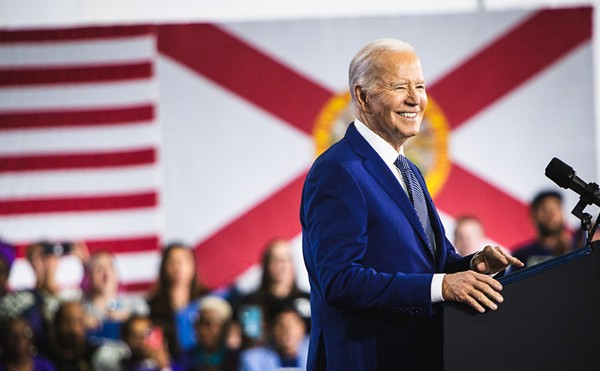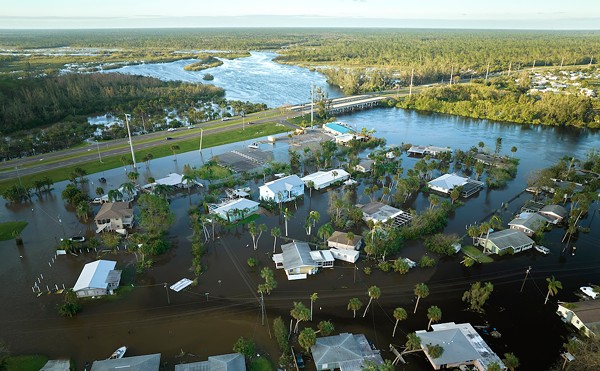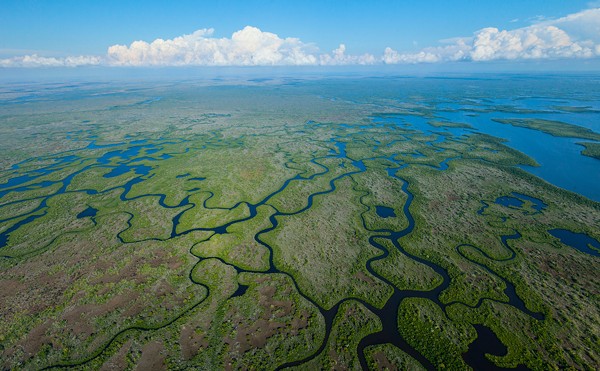On Saturday the International Solar Energy Society’s Tampa student chapter, the University of South Florida’s International Solar Energy Society’s (ISES): POWER-People Organizing World Energy Resources, hosted the 19th annual National Solar Energy Tour. The tour is a nationwide event organized by the American Solar Energy Society. It's the largest grassroots solar event, attracting about 150,000 participants and 5,000 solar sites to be exhibited throughout forty-nine states. The tour was sponsored by the Sierra Club’s Tampa Bay Group.
Taher Hussein, President of ISES: POWER and tour organizer, says the chapter was founded this past February. It already consists of 150 students, and succeeded in winning the outstanding new student organization award within the first two months.
Dr. Rachana Vidhi, tour organizer, believes that “renewable energy is the need of the hour. We cannot wait any longer.”
Dr. Yogi Goswami, Professor of Electrical Engineering at USF, Co-Director of USF’s Clean Energy Research Center and Faculty advisor for ISES: POWER, has been involved in the solar tours since the very beginning, in the 1970’s. He says that he and fellow Co-Director Dr. Elias Stefanakos saw from the very beginning, “Our future lies in an energy source that is not on this Earth, but comes from outside; the only source that we have is the sun.”
Shelly Aubuchon, TECO’s Renewable Energy Program Manager, described TECO’s solar rebate plan. An average sized home solar panel installation, which requires a ten kilowatt system for $30,000, but with a TECO rebate that covers $20,000, the homeowner now only has to pay $10,000. There is also a 30 percent tax credit. The system generates $20,000 worth of energy every year, making the return on the investment worth four years. Unfortunately, the funding for this rebate is supposed to end next year. She hopes the Public Service Commission will approve an extension of this funding. She says when TECO puts the rebate countdown clock on their website, the funding is gone in ten seconds.
Before she introduces Dr. Hannah West, a faculty member of USF’s Business Department, Dr. Vidhi says, “Hopefully the individuals of political representation present can take this information to places where we cannot go; any discussion related to science, solar and renewable energy cannot be complete without the discussion of business and policy aspects.”
Tampa City Council member Lisa Montelione was scheduled to attend, but was not present. Elizabeth Belcher, the Democratic candidate for the Hillsborough County Commission District 2 seat, was in in attendance. She supports a County ordinance that will require solar panels on all government buildings, as well as replacing government vehicles with hybrids. Alan Cohn, CD15 Congressional candidate for 2014, had one of his campaign organizers present to show his support.
“Most of our environmental harm can be traced back to economic activity; that is the one entity that has to get us out of this mess," says Dr. Hannah West. She says most of the Fortune 500 companies understand the value of sustainable energy practices, but 85% of our economy is small business owners. She hopes for more cross-disciplinary teams of engineers, business people and scientists to work together to find more sustainable business development. She thinks the solar energy industry is on the brink of exploding, saying that “in the last decade, solar capacity has gone up 120 fold."
West says there were 140,000 individual solar installations in the U.S. in 2013 and a total of over 445,000 systems operating today. She says, “The market value of all Photovoltaic or PV installations completed in 2013, was 13.7 billion. Solar accounted for 29 percent of all new electricity generation, up from 10% in 2012, making solar the second largest source of new generating capacity, behind natural gas. She says, 44 percent of all the new energy sources put together in the United States in the last three years, was either wind or solar.” Unfortunately, Florida ranked 13th for producing solar power last year.
Tim Bullock, is the Area Manager for Solar Source, one of the largest solar installers in Florida, and the twenty-second largest in the United States. He describes the amount of kilowatts of energy one’s system uses, compared to how much their solar panel system is producing. “If you have a surplus of energy, it goes back through the grid for future use.”
Dr. Goswami says his biggest disappointment in the Tampa Bay area is that there was so little media coverage of this event. He says that not only as citizens, but as humans, “We need to make our energy systems and environment sustainable; right now, we are not. The reason for the tour is to educate and provide people a firsthand observation of how the system would look on their house.” It is an opportunity to talk with the homeowners face to face about their experiences; both the investment they made in transitioning to solar power as well as the long term returns they have made.
Dr. Elias Stefanakos, also Co-Director of USF’s Clean Energy Research Center, says that back when he and Dr. Gaswami began working on solar energy forty years ago, they felt like the energy system in place wasn't quite right. “Other than the department of energy, nobody cared; gas was cheap- we use to buy gasoline for 20 cents a gallon.” He says the solar roof panels you see today have a significant output of power. “Forty years ago one watt produced was $64. Today one watt is 50 cents.” He didn't expect the price to go down so fast; especially in the past five or six years.
Stefanakos’s biggest concern for the future is storage. With inclement weather and night time, for the grid system to work for power companies, they would have to build endless amounts of storage. For the future he proposes that the storage of renewable energy is the “Achilles Heel of renewable energy.” He and Goswami are now focused on two types of storage for the future: Thermal storage for concentrated power plants and electrical storage for super capacitors for things like electric cars.
He describes some of the renewable energy sites around the University. USF has a carport with eight charging stations for electric cars. He says across the street they are developing a solar thermal power generator where they concentrate power through thermal conversion to produce electrical energy.
When Stefanakos asked the audience of about 65 people if they believe in climate change, everyone raised their hand. Then he said, “Can you imagine congressmen and senators raising their hands like that? We wouldn't have any problems today…But they’re not scientists.” He asks, “Suppose 30 to 40 years from now, all the ice has melted and the sea has risen five feet, and we have a huge problem; what are you going to do? Are you just going to say, ‘Oops we made a mistake?'"















